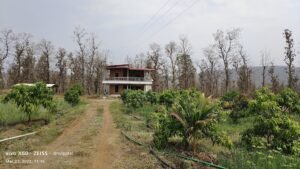As a travel blogger who has spent years exploring India, I’ve realized that the country’s greatest strength lies not only in its landscapes or food but in its spiritual depth. For foreigners, India isn’t just a destination – it’s a journey into the soul. I’ve met travelers from Germany, Brazil, Japan, and the U.S. who didn’t come just for sightseeing; they came to meditate, to learn yoga, to understand ancient philosophies, and to feel the energy of places where spirituality is still alive in daily life.
India’s spiritual geography is vast. From the Himalayan monasteries of Ladakh to the temple towns of Tamil Nadu, every state holds spaces that have shaped the world’s spiritual traditions for thousands of years. Here, I want to share the 16 best spiritual places in India for foreign travelers, based on my own experiences, cultural insights, and practical travel guides.
Table of Contents
1. Varanasi, Uttar Pradesh
My first trip to Varanasi left me overwhelmed. Standing on the ghats of the Ganga, watching the evening Ganga Aarti, I felt a spiritual force unlike anywhere else.
- Why it’s special: Considered the oldest living city in the world, Varanasi is sacred to Hindus. It’s believed that dying here offers liberation (moksha).
- What to do: Attend sunrise boat rides, visit Kashi Vishwanath Temple, explore weaving communities, and witness cremation rituals at Manikarnika Ghat.
- Tip: Stay near Dashashwamedh Ghat for easy access to evening rituals.
2. Bodh Gaya, Bihar
When I visited Bodh Gaya, the quiet Bodhi tree where Buddha attained enlightenment drew people from all over the world – monks, pilgrims, and curious travelers.
- Why it’s special: This is where Prince Siddhartha became Buddha.
- What to do: Visit Mahabodhi Temple (UNESCO site), meditate under the Bodhi tree, and explore international monasteries built by countries like Thailand and Japan.
- Itinerary tip: Spend at least 2–3 days to join meditation sessions offered by monasteries.
3. Rishikesh, Uttarakhand
For me, Rishikesh is the perfect blend of adventure and spirituality. It’s the yoga capital of the world.

- Why it’s special: The Beatles famously stayed here in the 1960s, and since then, Rishikesh has attracted spiritual seekers worldwide.
- What to do: Join yoga retreats, attend Ganga Aarti at Parmarth Niketan, try river rafting, and explore ashrams like Sivananda.
- Best time: February–March during the International Yoga Festival.
4. Amritsar, Punjab
Walking barefoot into the Golden Temple at sunrise, I remember hearing the holy hymns echoing from the gurudwara—it felt deeply peaceful.
- Why it’s special: It is the holiest shrine of Sikhism, open to all faiths.
- What to do: Sit by the Sarovar (holy pool), join the langar (community kitchen that feeds thousands daily), and witness the spirit of equality.
- Factual note: The temple kitchen serves nearly 100,000 free meals every day.
5. Dharamshala & McLeod Ganj, Himachal Pradesh
Meeting Tibetan monks in McLeod Ganj was one of the most eye-opening spiritual experiences of my life.
- Why it’s special: Home to the Dalai Lama and the Tibetan government-in-exile.
- What to do: Visit Namgyal Monastery, attend Buddhist teachings, explore Tibetan museums, and trek in the Dhauladhar ranges.
- Itinerary idea: Combine a 5-day stay with meditation courses offered by Tushita Meditation Centre.
6. Tiruvannamalai, Tamil Nadu
Climbing the sacred Arunachala Hill in Tiruvannamalai is something I’ll never forget.
- Why it’s special: Known for Sri Ramana Maharshi’s ashram and Arunachaleswarar Temple dedicated to Lord Shiva.
- What to do: Practice “Girivalam” (walking around the Arunachala hill), meditate at Ramana Ashram, and attend monthly full moon gatherings.
- Best time: Kartigai Deepam festival when a giant fire is lit atop the hill.
7. Haridwar, Uttarakhand
Compared to Rishikesh, Haridwar feels more traditional. Watching thousands take a dip in the Ganges at Har Ki Pauri was deeply moving.
- Why it’s special: One of the seven holiest cities for Hindus, and a key Kumbh Mela site.
- What to do: Join the evening Ganga Aarti, visit local temples, and experience the energy of mass pilgrimages.
- Insider tip: Combine Haridwar with Rishikesh in a single trip – it’s only 20 km away.
8. Shirdi, Maharashtra
I once met a group of German devotees who came to Shirdi every year. That’s the global pull of Sai Baba.
- Why it’s special: Home of the 19th-century saint Sai Baba, known for his teachings on unity of all religions.
- What to do: Visit Sai Baba Samadhi Mandir, Dwarkamai mosque, and the meditation center.
- Factual data: Over 60,000 pilgrims visit Shirdi every day.
9. Pushkar, Rajasthan
The Pushkar Lake at sunset, surrounded by 52 ghats, felt magical.

- Why it’s special: One of the few temples in the world dedicated to Lord Brahma.
- What to do: Take part in evening aarti at the lake, explore Pushkar Fair (if visiting in November), and try yoga sessions offered by guesthouses.
- Unique fact: Foreign travelers love Pushkar’s mix of spirituality and bohemian vibe.
10. Kedarnath, Uttarakhand
Reaching Kedarnath was one of the hardest but most rewarding journeys I’ve made.
- Why it’s special: One of the 12 Jyotirlingas of Lord Shiva, located in the Himalayas.
- What to do: Trek 16 km from Gaurikund to the temple, join early morning prayers, and enjoy the Himalayan silence.
- Tip: Visit between May and October – closed in winter due to heavy snow.
11. Auroville, Tamil Nadu
In Auroville, near Puducherry, I experienced a unique blend of spirituality and sustainability.
- Why it’s special: Founded by Mirra Alfassa (The Mother), Auroville is an international township aiming at human unity.
- What to do: Meditate at the Matrimandir (golden sphere), explore sustainable living projects, and join workshops on wellness.
- Best for: Foreigners seeking alternative lifestyles and community living.
12. Ajmer Sharif Dargah, Rajasthan
When I visited Ajmer Sharif, I saw people of all faiths praying together – it was incredibly moving.
- Why it’s special: Tomb of Sufi saint Khwaja Moinuddin Chishti, a symbol of love and harmony.
- What to do: Attend qawwali evenings, offer chadars (sacred cloth), and experience Sufi spirituality.
- Factual note: The shrine sees over 150,000 pilgrims during Urs festival.
13. Mount Abu – Dilwara Temples, Rajasthan
The intricate marble carvings at Dilwara Temples left me stunned.
- Why it’s special: Jain pilgrimage center known for architectural brilliance and spiritual calm.
- What to do: Visit five main temples (11th–13th century), meditate in silent halls, and explore Mount Abu’s natural beauty.
- Tip: Avoid weekends to experience the serenity.
14. Sarnath, Uttar Pradesh
Just 10 km from Varanasi, I visited Sarnath where Buddha gave his first sermon.
- Why it’s special: It’s one of the four major Buddhist pilgrimage sites.
- What to do: Explore Dhamek Stupa, Mulagandha Kuti Vihar, and the Archaeological Museum.
- Best time: October to March for pleasant weather.
15. Hemis Monastery, Ladakh
At 11,000 feet, Hemis Monastery in Ladakh felt like stepping into another world.
- Why it’s special: One of the largest Buddhist monasteries in Ladakh, famous for its annual Hemis Festival.
- What to do: Meditate in prayer halls, explore thangkas (Tibetan paintings), and witness masked dances during the festival.
- Itinerary tip: Combine Hemis with Leh and Thiksey Monastery visits.
16. Puri Jagannath Temple, Odisha
Walking barefoot in the lanes of Puri leading to Jagannath Temple is something I’ll never forget.
- Why it’s special: One of the four Char Dham pilgrimage sites, known for the grand Rath Yatra festival.
- What to do: Attend temple rituals, join Rath Yatra (if visiting in June–July), and relax on Puri beach afterward.
- Factual insight: Non-Hindus are not allowed inside the temple, but foreigners can view it from nearby rooftops.
Itinerary Suggestions
For foreigners with limited time, I often suggest combining destinations:
- North India spiritual circuit (2–3 weeks): Varanasi → Bodh Gaya → Rishikesh/Haridwar → Dharamshala → Amritsar.
- South India circuit (2 weeks): Auroville → Tiruvannamalai → Puri → Shirdi → Mount Abu.
- Himalayan focus (2 weeks): Dharamshala → Kedarnath → Hemis → Rishikesh.

Conclusion
Traveling through India’s spiritual landscape has been the most transformative experience of my life. From the crowded ghats of Varanasi to the quiet monasteries of Ladakh, every place taught me something about faith, humanity, and inner peace.
For foreigners, these 16 spiritual destinations are not just tourist spots – they’re doorways into India’s soul. Whether you’re seeking meditation, cultural immersion, or simply a place to pause and breathe, India’s spiritual geography offers endless inspiration.
So, if you’re planning a trip, pack not just your camera but also an open mind and heart. Because in India, spirituality isn’t something you find in temples or monasteries alone – it’s in the people, the rituals, the chants, and even in the silence of the mountains.




